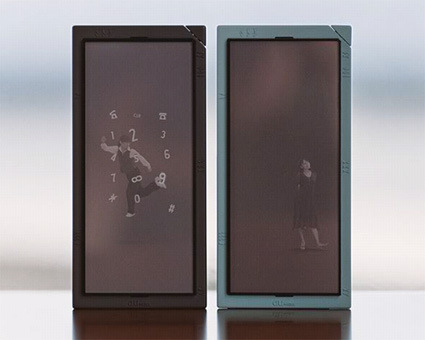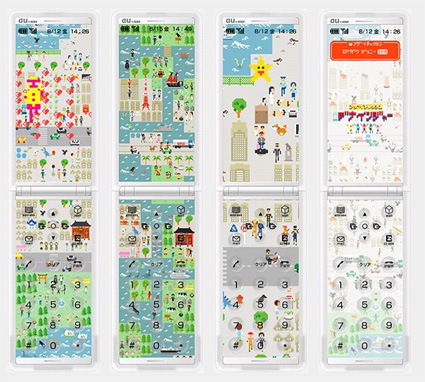The KDDI au design project is probably a favorite among many industrial designers and phone designers. Japan’s phone technology is certainly world-leading – this is fortunately paired by KDDI’s commitment to explore the forefront in the design side as well. Many design luminaries were engaged to envision what could mobile phone really be, resulting in many breath-taking concept phones, with quite a good percentage going into mass-production (such as the Infobar by Naoto Fukasawa, the Mediaskin by Tokujin Yoshioka, Talby by Marc Newson etc).
I’m not sure if I’m late to the party, but I just came across these three new(ish?) phone prototypes – the latest in the series.

Even though there are English descriptions, the really poetic nature of the descriptions for the Sorato can only leave me guessing at its intention (I have absolutely no qualms about its product design though). The Sorato – “use this phone to reach up and touch the sky, and feel the present moment in your hand” – if I guess correctly, the phone’s outer skin morphs according to the environment around it, much like how a chameleon blends into the surrounding. The crystal clear and yet soft object becomes like a drop of rain on the car windshield, capturing the poetry of the environment into itself.

In the Hitoka concept, the typically tech-centric phone interface is swapped for a much more emotive scene: think of it as having your own butler that lives in the world within your phone’s frame – “they are your friends, your assistants, your confidants, and even your alter egos. A little human touch adds even greater pleasure to communication”.

Actface translates activity on your phone into a SimCity-like arena: “your town grow as you use the phone. Your town’s residents are the people in your address book. In your town, something is always happening”. It’s pretty interesting to see how the harvested information is translated into different developments of the town too – and in this way, everybody has their own truly customized, a unique digital fingerprint on their phones.
I’m not sure whether KDDI set a specific theme for this year’s exploration, or did the designers explore their own paths and coincided on a broad perspective – it does seem like there’s a focus towards the the software rather than hardware – on how the phone behaves; how the phone reacts emotionally and organically.
It’s no longer so much about the product design: the curves, surfaces and line of a technological product. Instead, you get a feeling that this is an emotional object, with a life and world of its own, that just happened to be a phone as well. The designers are really designing the phones’ behaviors as much as the phones themselves.
What are the implications of designing behaviors be – what are the new challenges and opportunities as compared to designing products/artifacts?

